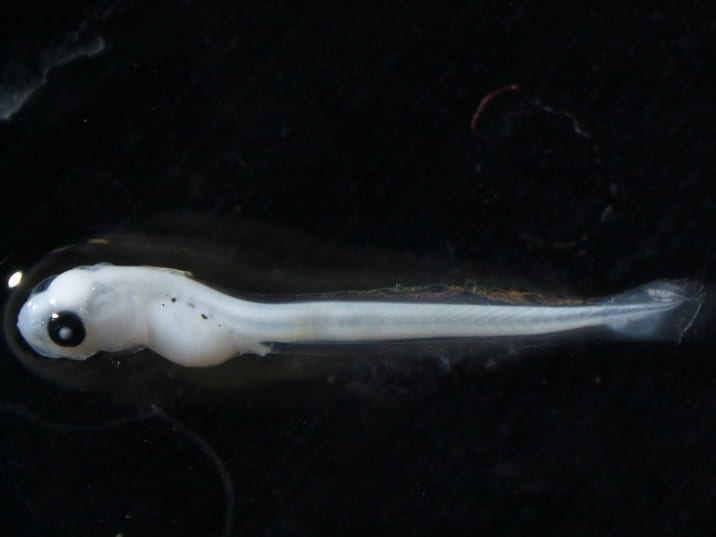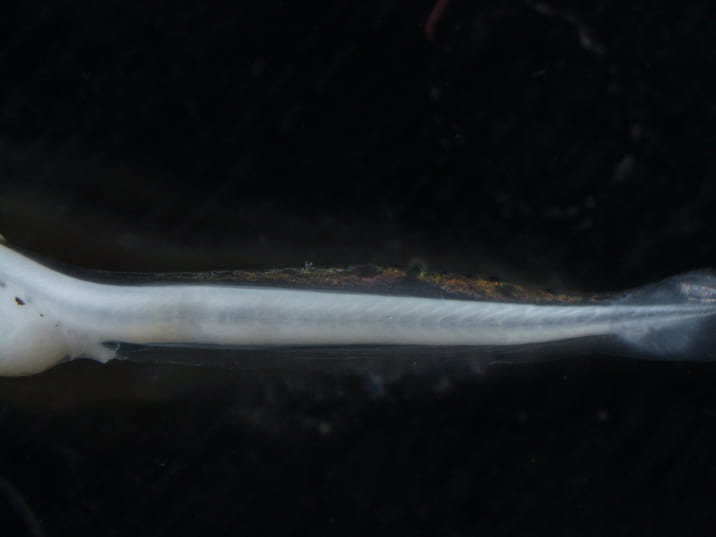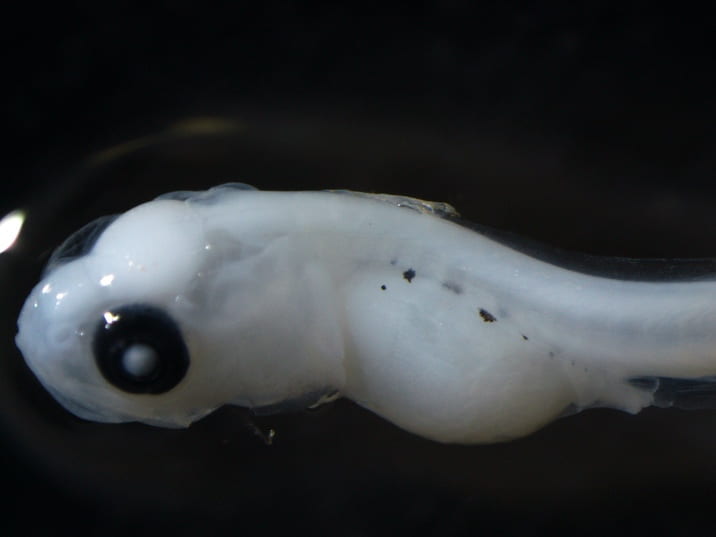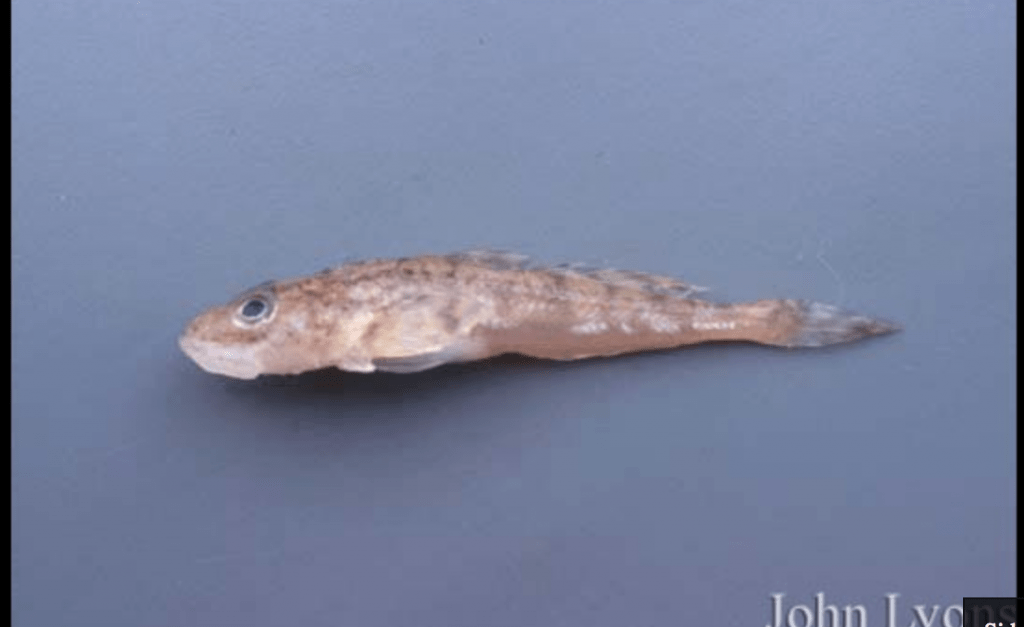Key Characteristics:
- 36-43 total myomeres
- Body elongated
- Melanophores may appear along dorsum of (inside lining of fish) peritoneum

Larval Deepwater Sculpin. United States Fish Wildlife Service. Marian Shaffer. 2017.

Larval Deepwater Sculpin’s Body/Tail. United States Fish Wildlife Service. Marian Shaffer. 2017.

Larval Deepwater Sculpin’s Head. United States Fish Wildlife Service. Marian Shaffer. 2017.
- Body not elongated, eel-shaped, round in transverse section, uniformly pigmented (1B)
- Chin barbels absent (3B)
- Snout short, its length usually less than 10% TL; median fins otherwise (5B)
- Median fins or finfolds showing distinct separation (7B)
- No adipose fin, or demarcation of one, in finfold (10B)
- Preanal myomeres significantly less than postanal myomeres (difference greater than five myomeres) (14B)
- Postanal myomeres less than 35, total myomeres less than 50, chin barbel absent (16B)
- Postanal myomeres less than 25, preanal length usually greater than 40% TL (17B)
- Mouth Terminal or inferior; usually two dorsal fins (18B)
- Pectoral fins well developed; head depressed; swim bladder not visible (19A)
- Cottidae
Or*
- Body not elongated, eel-shaped, round in transverse section, uniformly pigmented (1B)
- Chin barbels absent (3B)
- Snout short, its length usually less than 10% TL; median fins otherwise (5B)
- Median fins or finfolds continuous, or nearly so (7A)
- Pectoral fins large and usually well developed; lower jaw without barbel; urostyle upturned or notochord straight, if straight caudal fin rays developed on ventral half only (8B)
- Larva sparsely pigmented; often exhibiting “saddle markings” on dorsum; opercle often with spine(s); notochord flexed; mouth subterminal (9B)
- Cottidae
Adult History
- Physical Description
- Wide & flat head, Lack of scales, pair of independent pelvic fins, huge mouth that extends to beneath the eye, pelvic fin not fused but consist of 3 rays, 2 dorsal fins (first: 7-8spines & second: 12-14 rays), complete lateral line on top, preopercular spines, anal fin (13-15 rays and no spine) and rounded or square tail
- Spawning Habitat
- Slow – moving water near shores of lakes, rivers, or streams
- Spawning Substrate
- Eggs are deposited in either gravel or sand
- Spawning Behavior
- Male prepares nest under objects (rocks, logs, sticks)
- Won’t leave until all the eggs are hatched
- Male prepares nest under objects (rocks, logs, sticks)
- Time of Year
- WInter spawning in Lake Michigan
- Spawning typically takes place at water temperatures below 42°F
- Diet
- Herbivorous
- Insects, copepods, plant matter, algae, and protozoa

